Posted: January 15th, 2018 | 2 Comments »
How lovely to see that the American Chamber of Commerce in Shanghai has included Carl Crow in its timeline – apparently on the wall of their offices in Shanghai’s Portman Centre (not the city’s most wonderful piece of architecture, but never mind)…The mention notes Carl’s involvement in the negotiations in 1923 to secure the release of various foreign and Chinese hostages up in Shandong – a mission he undertook under the joint auspices of the AmCham and the Red Cross in Shanghai….of course if you want to know more my biography of Carl is still available (amazon.co.uk or amazon.com).
 (photo courtesy of the extremely talented snapper John van Fleet)
(photo courtesy of the extremely talented snapper John van Fleet)
Posted: January 14th, 2018 | No Comments »
I’m very pleased to say that my little new year posting of some (now) rather obscure Eunice Tietjens poems from China, all written c.1915, has inspired Camphor Press to reissue Tietjens collected verse on China – Profiles from China: Sketches in Verse of People & Things Seen in the Interior. It’s a very nice and very cheap e-book. Tietjens’s verse is problematic in many ways in 2018 – lots of ‘othering’ and so on – but she was a genuine visitor to China – including Shanghai’s International Settlement and Hong Kong – so her work has the value of being part of the collective memory of foreigners in China in the first half of the twentieth century.
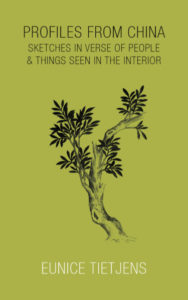
Posted: January 13th, 2018 | No Comments »
Sail from Southampton (in 1937) down to the Dutch East Indies…delightful…

Posted: January 12th, 2018 | No Comments »
Here’s The Spectator’s editorial from 1937 on Nanking. Though we now think of The Speccie as the house journal of the more vulgar elements of the Tory Party, in the 1930s it was, for a period, one of the most outspoken English publications on the rise of fascism and German nazi-ism, as well as Japanese militarism and the threat to China, though the publication generally supported Chamberlain’s appeasement policy. It’s an interesing read anyway i think…
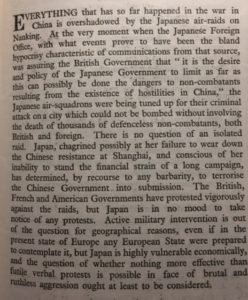
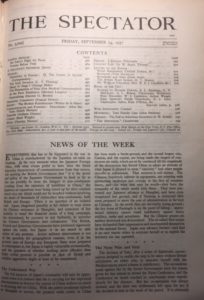
Posted: January 11th, 2018 | 1 Comment »
I spent much of the summer as the Historical Consultant on a two-part documentary, China on Film. The documentary was produced by Make Production for Channel News Asia in Singapore, directed by Jeremy Bristow and narrated by the cinematographer Christopher Doyle. The documentary covers film of China from the very earliest early twentieth century footage to the Second World War – most of it is from the treasure troves of the British Film Institute Archives in London. You can imagine that a summer in a dark room watching footage of old China and trying to work out where, what, who and when was about the best summer imaginable for me!!
Anyway, you can watch the two episodes here on Channel News Asia’s website….
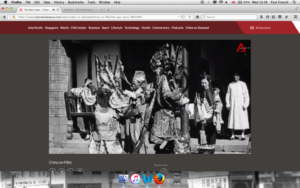
Mystery still surrounds the earliest film ever made in China – recently discovered in a shop basement in the north of England. Young men in mandarin attire laugh and joke as they glance at the camera, eyeballing the 21st century viewer from the time of the Qing Dynasty. Since those gentlemen were recorded on celluloid, China has experienced nearly 120 years of momentous change.
These first fleeting images are part of a unique collection of early films at the British Film Institute (BFI), covering every facet of Chinese life from the time of the Boxer Rebellion to the Communist victory in 1949. Â
With unique access to the BFI National Archive, this 2-part documentary shows films never seen before this outside the UK. The best of these extraordinary images are worked into a compelling narrative to reveal new insights into this period of tremendous change and turmoil in China. Voiced by renowned cinematographer Christopher Doyle, the films capture a pre-CCP China in vivid motion. Â
Read more at https://www.channelnewsasia.com/news/video-on-demand/china-on-film
Posted: January 10th, 2018 | No Comments »
Tuesday, 9th January 2018
7:30 pm – 9:30 pm
RAS Library
The Uyghurs across China
Speaker: Peter Hagan
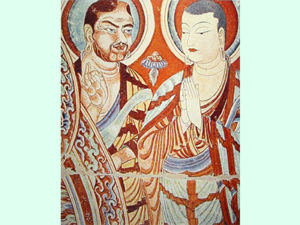
During the session we will hear and discuss Peter Hagan’s presentation on “The Uyghurs across Chinaâ€; Uyghur Khaganate and the Tang Dynasty relationship, how the Uyghur society changed when the Khaganate collapsed.
Chinese History Study Group meets monthly – generally the second Tuesday of each month September through June. Our members select and research topics of personal interest, make brief oral presentations, then engage in discussion with those attending the talk. Each month one or two members discuss their topics.
For a list of future topics and presenters, please contact convener Furkan Erdogan studygroup@royalasiaticsociety.org.cn
Posted: January 7th, 2018 | No Comments »
Remebering Pamela Werner – whose murdered body was discovered today, 81 years ago, by the Fox Tower in Peking…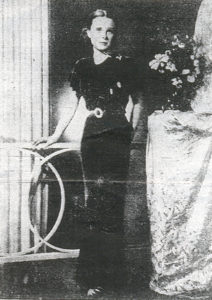
Posted: January 6th, 2018 | No Comments »
“From Rebel to Reporter: 40 Years Working in China”
By former CNN Bureau Chief Jaime FlorCruz

In August 1971, Jaime FlorCruz was a left-leaning Filipino student, leading a study tour to China for idealistic Filipino activists. But back in Manila then-strongman Ferdinand Marcos put his name on an immigration blacklist and declared martial law. FlorCruz risked arrest — and worse — if he were to return to his homeland under Marco’s repressive rule. As a result, he and four other Filipinos from his group embarked on a new life in China, an experience he described (on hindsight) as being “stranded in the right place at the right time.” In his talk Jaime will recount his unique nearly five-decade-long journey through Chinese contemporary history. He’s worked on a state farm and a fishing boat. He entered Beida after it reopened following the Cultural Revolution, counting among his schoolmates famous names such as Li Keqiang and Bo Xilai. And, after the late Deng Xiaoping declared an era of “reform and opening up”, FlorCruz began an unexpected career in journalism. He worked first for Newsweek, then Time, and finally as CNN’s Beijing Bureau Chief before retiring in Dec. 2014 — after the longest single unbroken stay in Beijing by a foreign correspondent.
 WHAT: Former CNN Bureau Chief Jaime FlorCruz on “From Rebel to Reporter: My Four Decades Working in China”
WHAT: Former CNN Bureau Chief Jaime FlorCruz on “From Rebel to Reporter: My Four Decades Working in China”
WHEN: Jan. 23, 2018, Tuesday from 8:00 – 9:30 PM
WHERE: The Bookworm, Building 4, Nan Sanlitun Road, Chaoyang District, Beijing tel: 6586 9507
HOW MUCH:
Free for RASBJ and Bookworm members but advanced registration required;
RMB 80 with advanced registration for non-members/general public (includes welcome drink);
RMB 100 at the door on a SPACE AVAILABLE BASIS
RSVP:Â https://yoopay.cn/event/55554187

 (photo courtesy of the extremely talented snapper John van Fleet)
(photo courtesy of the extremely talented snapper John van Fleet)








